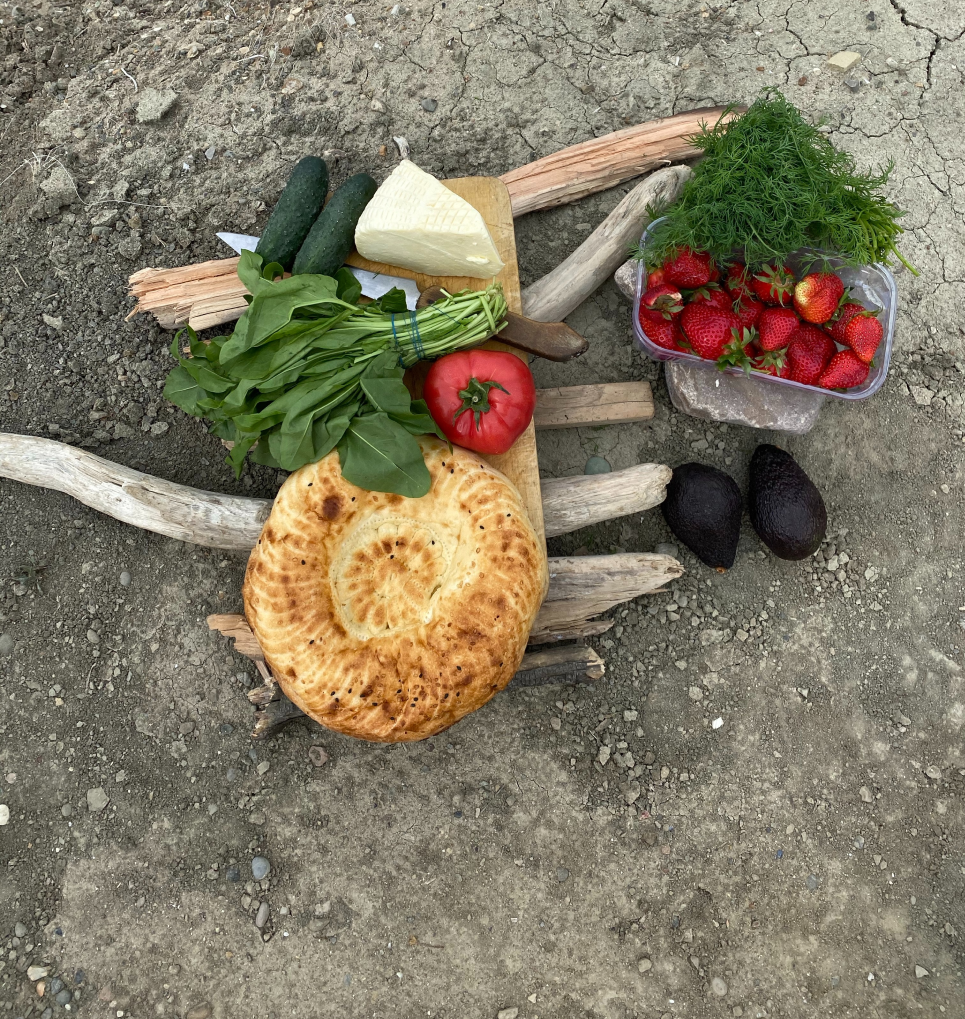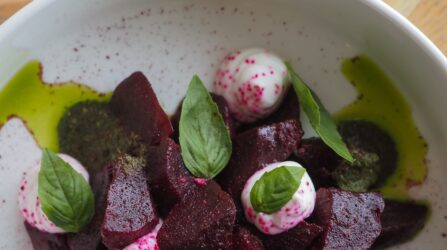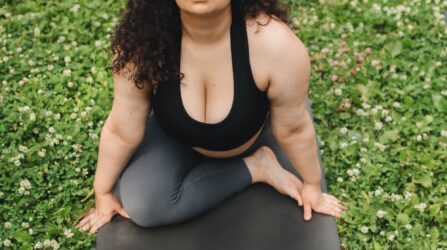Home > Female Body > Menstrual cycle > Eat for your cycle: Foods for every phase


Many women struggle with frustrating symptoms like mood swings, fatigue, and painful cramps before and during their periods. If you count yourself among them, you may think it’s a natural part of life, but that’s not always the case. Proper nutrition can help boost your hormonal health, often relieving or lessening symptoms associated with different menstrual cycle phases. The concept of eating specific foods to support your body during your cycle isn’t new, but for many women, it can be life-changing. In this article, we’ll discuss the key aspects of using a cycle syncing food chart for hormonal health so you can feel your best through all menstrual cycle stages.
Cycle syncing or cycle eating aligns your lifestyle habits, like exercise and diet, with the different stages of your menstrual cycle. As women, our bodies have different monthly requirements to support healthy hormones. When we don’t provide it with what it needs, we often experience symptoms like fatigue, cravings, bloating, weight gain, and headaches.
By supporting your hormonal health with a nutrient-dense diet that aligns with each cycle stage, you can enjoy higher energy levels and reduced symptoms all month long. But how does a cycle synching chart work? It’s very simple: You eat foods with a nutrient composition that supports healthy hormone levels in each stage of your cycle. Eating with your cycle doesn’t mean you have to make complicated meals every night. You can enjoy delicious, easy-to-prepare foods packed with nutrients your body will love.
Following a menstrual cycle diet plan has many benefits to help you feel great throughout your cycle. Let’s explore some of the top ones below.
Fertility support – When your body has the nutrition it needs, your internal systems can function properly. Eating the proper menstrual phase foods can have a positive impact on fertility, including ovulation support and period regulation. However, if you are already ovulating regularly, it will help you maintain normal ovarian function but won’t increase your fertility.
Hormonal balance – Hormones control numerous bodily functions, including reproduction, metabolism, mood, and growth. When your hormones are imbalanced, you can experience symptoms like weight changes, mood fluctuations, digestive issues, irregular periods, hair loss, and more. Knowing what to eat during menstrual phase changes is the key to supporting progesterone and estrogen levels, two key reproductive hormones, along with other crucial hormone levels throughout your body.
Lessened PMS symptoms – PMS symptoms can range from mild to severe. Since they’re impacted by hormone fluctuations, eating according to your cycle is an excellent way to support healthy hormone levels and, in turn, lessen symptoms.
More energy – Sometimes, you may feel more fatigued than usual, indicating that your body needs a gentle energy boost compared to other times in your cycle. Knowing which foods to eat during menstrual phase changes will help you fuel your body so you can feel energized and alert.
Stabilized mood – Hormonal fluctuations often cause stress and mood swings during your cycle. Eating according to a menstrual cycle food chart might help stabilize your mood.
Every woman who menstruates can benefit from following a cycle-syncing meal plan since we all experience menstrual cycle changes. However, eating the right menstrual cycle foods will have even greater benefits for women in the following categories:
A cycle sync diet can help you identify and treat possible hormone imbalances that cause period irregularities. As we mentioned earlier, a woman’s reproductive hormones play a key role in her overall health. When estrogen, progesterone, and even testosterone levels are imbalanced, it can cause heavy or irregular periods, low libido, mood swings, acne, hot flashes, brain fog, and digestive issues.
Women with PCOS often experience weight control struggles due to higher levels of androgens and insulin. Cycle-syncing meals can help control excessive insulin production and, when paired with regular workouts, combat some of the symptoms caused by these hormonal changes.
PMS can be debilitating, which is why choosing the right foods to eat during menstrual cycle phases can be so helpful. Many women find some level of relief from PMS symptoms, including breast tenderness, bloating, and mood swings.
With cycle syncing, nutrition is at the forefront of your diet, making it an excellent choice when trying to conceive. Providing your body with the proper nutrients makes pinpointing ovulation easier, ensuring the developing fetus has what it needs to grow and thrive.
A woman’s menstrual cycle is broken into five stages: 1. early follicular or menstruation, 2. the mid-follicular phase, 3. the late follicular phase or ovulation, 4. the early luteal phase, and 5. the late luteal phase. During each stage, your body has different nutritional needs to support the hormonal fluctuations it undergoes. Knowing how to eat for your cycle provides the fuel needed to sustain these changes, helping you feel more energized all month. We’ve created a general guideline for a cycle sync food chart so you can choose the right foods to support each menstrual phase.
This time of your cycle is when your uterus sheds its lining, causing bleeding, known as your period, and in your ovaries, follicles are recruited for a new cycle. During this stage of your cycle, your progesterone and estrogen levels are low. To support your body when hormone levels are low, you’ll want to eat a diet high in healthy fats and minerals, fiber, and protein. In addition, with each cycle, you lose iron due to bleeding; therefore, you may want to ensure that you meet your needs for this mineral as well. You may also want to include foods that increase progesterone, Examples include:
Staying away from highly processed goods and excess caffeine may be challenging if you’re having junk food cravings, but it can help you control and ease symptoms. Check out the example of a daily period food chart below.
Breakfast
Cheddar and kale omelet – Made with two eggs with sauteed kale. Top with a sprinkle of cheddar cheese and serve with a slice of whole-grain bread.
Cashews: About 1 oz of roasted cashews for a dose of healthy fats.
Brown rice salad: Mix brown rice, cherry tomatoes, avocado, and diced bell pepper with cilantro and lime juice.
Steamed brussel sprouts: Lightly steam brussel sprouts for added fiber and vitamins.
Grilled chicken: Marinate in herbs and lemon and serve with sauteed spinach and sweet potatoes.
Side salad: Romaine and mixed greens with cucumber, tomatoes, and a raspberry vinaigrette dressing.
Oatmeal: Top steel-cut oats with banana and add cinnamon and one tablespoon of chia seeds.
Green tea: a cup of green tea with honey for hydration and antioxidants.
Fruit and Greek yogurt: Top Greek yogurt with berries for extra vitamin C.
Bean soup: Mix your favorite beans into a soup with celery, carrots, and spices. Serve with whole-grain toast.
Side of greens: Pick your favorite greens and mix with olive oil and lemon.
Seared salmon: Season with lemon and garlic and serve with quinoa and steamed green beans.
Roast broccoli: Season with sea salt and olive oil.
Protein smoothie: Blend almond milk, one scoop of protein powder, one banana and a handful of spinach. For extra fiber, add chia seeds.
Cucumber and dill slices: Coat cucumber with dill and a sprinkle of olive oil.
Chickpea “tuna” salad: Mash chickpeas with red onion, celery, dill, and olive oil.
Whole-grain pita: Serve as a side.
Stuffed peppers: Hollow out bell peppers and fill with a brown rice, corn, and black bean mixture. Top with shredded mozzarella.
Mix vegetables: Zucchini and roasted carrots with herb topping.
You can find additional menstrual cycle recipes inside the Hormona app.
The second stage of the menstrual cycle is the mid-follicular phase. This part starts after your period and lasts up to the most fertile days of your cycle, specifically 5 days before ovulation. During the mid-follicular phase, your estrogen levels are growing with the follicle growth and maturation.
You can support your ovaries’ work and follicle maturation with protein, omega-3, and fiber. Examples of foods include:
Berry smoothie: Blend almond milk with banana, frozen berries, spinach, kiwi, and chia seeds.
Almond butter and apples: Top a medium apple with 2 tablespoons of almond butter.
Quinoa salad: Mix quinoa with parsley, cherry tomatoes, chickpeas, and diced cucumbers and top with a lemon vinaigrette dressing.
Baked herb turkey: Marinate turkey in garlic, lemon juice, and herbs and serve with steamed asparagus and sweet potatoes.
Side salad: Romaine with onions, cucumber, and avocado with olive oil dressing.
Overnight oats: Soak steel-cut oats in almond milk for at least 8 hours, top with honey, walnuts, and bananas.
Greek yogurt: Top Greek yogurt with flaxseeds and berries.
Chicken lettuce wraps: Wrap chicken breast in romaine and top with tomatoes, red onion, cucumber, and cheddar cheese.
Broiled salmon: Season with herbs and lemon, served with broccoli and brown rice.
Eggs and avocado: Top two poached eggs with slices of avocado and season with chili flakes, salt, and pepper.
Carrots and celery: Raw carrots and celery with plain Greek yogurt dip.
Mixed green salad: Mixed greens with chicken breast, tomatoes, cucumber, and bean sprouts.
Stir-fried vegetables and tofu: Stir fry snap peas, carrots, and bell peppers with tofu in amino acids and serve with brown rice.
These are five days before your ovulation and the day of ovulation itself. While some may call it the ovulatory phase for simplicity, ovulation isn’t actually a phase within your cycle. During ovulation, the follicle releases a mature egg for fertilization.
Estrogen levels reach their highest before and sharply drop as progesterone surges. Consuming foods high in protein, fiber, folic acid, and omega-3 fatty acids will help level out symptoms from this drastic hormonal change. Knowing what to eat during ovulation, a cycle-syncing foods chart can make this stage easier. They include:
Egg and spinach omelet: Mix two eggs with a handful of spinach. Serve with whole-grain toast.
A bowl of cantaloupe
Tuna salad: Combine tuna with celery, red onion, lemon, and olive oil
Whole-grain pita: Serve on the side
Baked chicken: Bake chicken with garlic and herbs with a side of Brussels sprouts and brown rice
Side salad: Romaine with cherry tomatoes, cucumber, onion, and snap peas with olive oil dressing.
Greek yogurt and fruit: Greek yogurt topped with berries, flaxseed, and honey.
Almonds: A handful of almonds.
Brown rice salad: brown rice, chicken, onions, bell pepper, and tomatoes with vinaigrette dressing.
Tofu scramble: Sautee mashed tofu with spinach, chickpeas, nutritional yeast, and garlic.
Overnight oats: Soak steel-cut oats with almond milk, blueberries, and honey. Let sit in the refrigerator for at least 8 hours.
Popcorn: 1 to 2 cups of Air-popped popcorn.
Salmon sushi: Salmon sushi with brown rice and amino acids.
Turkey burgers: Mix ground turkey with salt, pepper, garlic, and 1/4 cup breadcrumbs. Serve with whole-grain bun, lettuce, and tomatoes.
Side salad: Mixed greens with onions, tomatoes, cucumber, and carrots with an olive oil dressing.
The luteal phase is the second phase of the menstrual cycle and involves the ex-follicle transforming into the corpus luteum in the ovary, producing high amounts of progesterone and estrogen. Typically, this phase lasts 12 to 14 days. While the early luteal phase, or the first half, is a great time for most individuals, the late luteal phase, which is the time before the period, is not.
You can support your ovarian work during the early luteal phase with protein, omega-3, fiber, and calcium-rich foods. Examples include:
Greek yogurt and fruit: Greek yogurt topped with berries, almonds, and a drizzle of honey.
Avocado dip: Mash avocado and cut one whole-grain pita into triangles. Air fry for 5 minutes and use as chips and dip.
Chicken wrap: Wrap roasted chicken in romaine lettuce and top with tomatoes, onions, and bean sprouts. Dip in a mustard vinaigrette.
Grilled salmon: Grill salmon and serve with roasted asparagus and sweet potato.
Scrambled eggs: Scramble eggs with low-sodium salsa. Serve with cantaloupe.
Cashews: Handful of cashews.
Salmon salad: Mix canned salmon with Dijon mustard, celery, and chickpeas. Place on whole-grain toast.
Steak and potatoes: Pan-sear a lean steak and serve with roast potatoes and spinach.
Side salad: Mixed greens with kale, almond slivers, and apples. Top with raspberry vinaigrette.
Bagel and lox: Whole-grain bagel topped with light cream cheese and lox.
Greek yogurt: Greek yogurt with granola.
Chicken bowl: On a bed of cauliflower rice, place shredded chicken, pico de gallo, onions, avocado, and a sprinkle of cheese.
Pork ramen: Roast pork with bok choy and half a boiled egg in bone broth with konjac noodles.
These are the days preceding your period, usually the most disturbing ones for many women. Magnesium-rich foods can help combat symptoms, while proteins and healthy fats help maintain muscle mass. Foods to add to your cycle-syncing grocery list during the luteal phase include:
Protein oatmeal: Mix steel-cut oatmeal with almond milk, one scoop of protein powder, banana, and almond butter.
Nuts with dark chocolate: 2 oz 70% or higher dark chocolate and a handful of pecans.
Brown rice bowl: Brown rice with avocado, corn, bell peppers, and black beans with lime juice.
Lean steak: 4 oz lean steak with roasted asparagus.
Side salad: Mixed greens with cherry tomatoes, onions, and cucumbers with a raspberry vinaigrette dressing.
Eggs and turkey sausage: Two eggs with two slices of turkey sausage
Fresh fruit: Fresh strawberries, blueberries, and bananas.
Apple slices and almond butter
Bean soup: hearty bean soup with spinach, celery, and carrots with whole-grain toast.
Roast chicken: Roasted chicken with garlic and herbs with a side of Brussels sprouts and sweet potatoes.
Chia seed pudding: Soak chia seeds in almond milk for at least 8 hours. Top with berries and Greek yogurt.
Pineapple and cottage cheese
Romaine wraps: Wrap chicken, avocado, feta cheese, and tomatoes in romaine leaves and top with balsamic vinaigrette.
Beef stir-fry: Cook lean beef with bell pepper, carrots, and snap peas in amino acids. Serve with quinoa.
As you can see, the cycle eating chart is packed with delicious foods. Not only will they keep you feeling great, but these nutrient-dense foods help fight inflammation and promote heart health. Here are a few tips to get the most out of your cycle-syncing meal plan.
The cycle-syncing food chart will help support your hormonal health so you can feel great no matter the stage of your menstrual cycle. The Hormona app is a cutting-edge hormone track designed to revolutionize women’s hormone health. With Hormona, you can get comprehensive insights and tools to understand your body better so you can feel your best!
FAQ
When during your cycle do you eat the most?
Women tend to have salt and sweet cravings the most during the luteal phase of their menstrual cycle. However, it doesn’t actually impact calorie intake or macronutrients and micronutrients.
How long does it take to see results from cycle syncing?
While every woman differs, you can expect to see results from cycle syncing in a few weeks to several months after starting.
When in your cycle do you burn the most calories?
You burn the most calories during the luteal phase of your cycle, around two weeks before you start your period. Since your resting metabolism increases, your body may burn more calories to maintain energy.
When are you most tired during your cycle?
Along with burning calories, it’s also common to feel more tired during the late luteal phase when estrogen and progesterone drop a few days before your period.
What not to do during periods
During your period, it is better to avoid:

-


Dr Singh is the Medical Director of the Indiana Sleep Center. His research and clinical practice focuses on the myriad of sleep.

Understanding the female libido Before we can answer, “Does progesterone increase sex drive?” it’s important to gain a better understanding of what a “sex drive” means. The female libido or sex drive is how much you desire sexual activity. Every

Why am I so hungry before my period? Women who experience an increased appetite before period starts can feel frustrated that they’re craving foods they don’t normally eat. You may be wondering, “Why do I eat so much before my

Understanding cycle syncing workouts Did you know that evidence shows a link between the impact of exercise and menstrual cycle phases in women? It’s true. Women are at a higher risk of foot and ankle injury during workouts than men,
Hormona© 2025, All Rights Reserved
| Cookie | Duration | Description |
|---|---|---|
| cookielawinfo-checkbox-analytics | 11 months | This cookie is set by GDPR Cookie Consent plugin. The cookie is used to store the user consent for the cookies in the category "Analytics". |
| cookielawinfo-checkbox-functional | 11 months | The cookie is set by GDPR cookie consent to record the user consent for the cookies in the category "Functional". |
| cookielawinfo-checkbox-necessary | 11 months | This cookie is set by GDPR Cookie Consent plugin. The cookies is used to store the user consent for the cookies in the category "Necessary". |
| cookielawinfo-checkbox-others | 11 months | This cookie is set by GDPR Cookie Consent plugin. The cookie is used to store the user consent for the cookies in the category "Other. |
| cookielawinfo-checkbox-performance | 11 months | This cookie is set by GDPR Cookie Consent plugin. The cookie is used to store the user consent for the cookies in the category "Performance". |
| viewed_cookie_policy | 11 months | The cookie is set by the GDPR Cookie Consent plugin and is used to store whether or not user has consented to the use of cookies. It does not store any personal data. |
